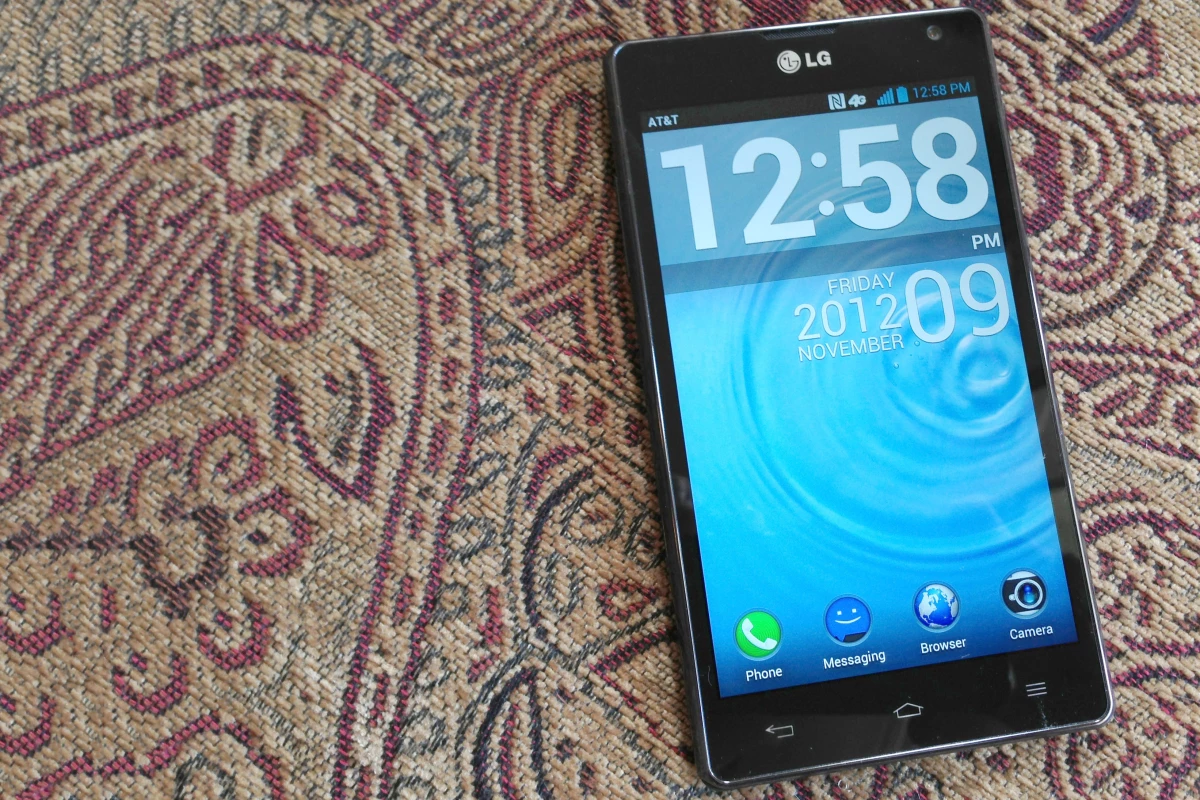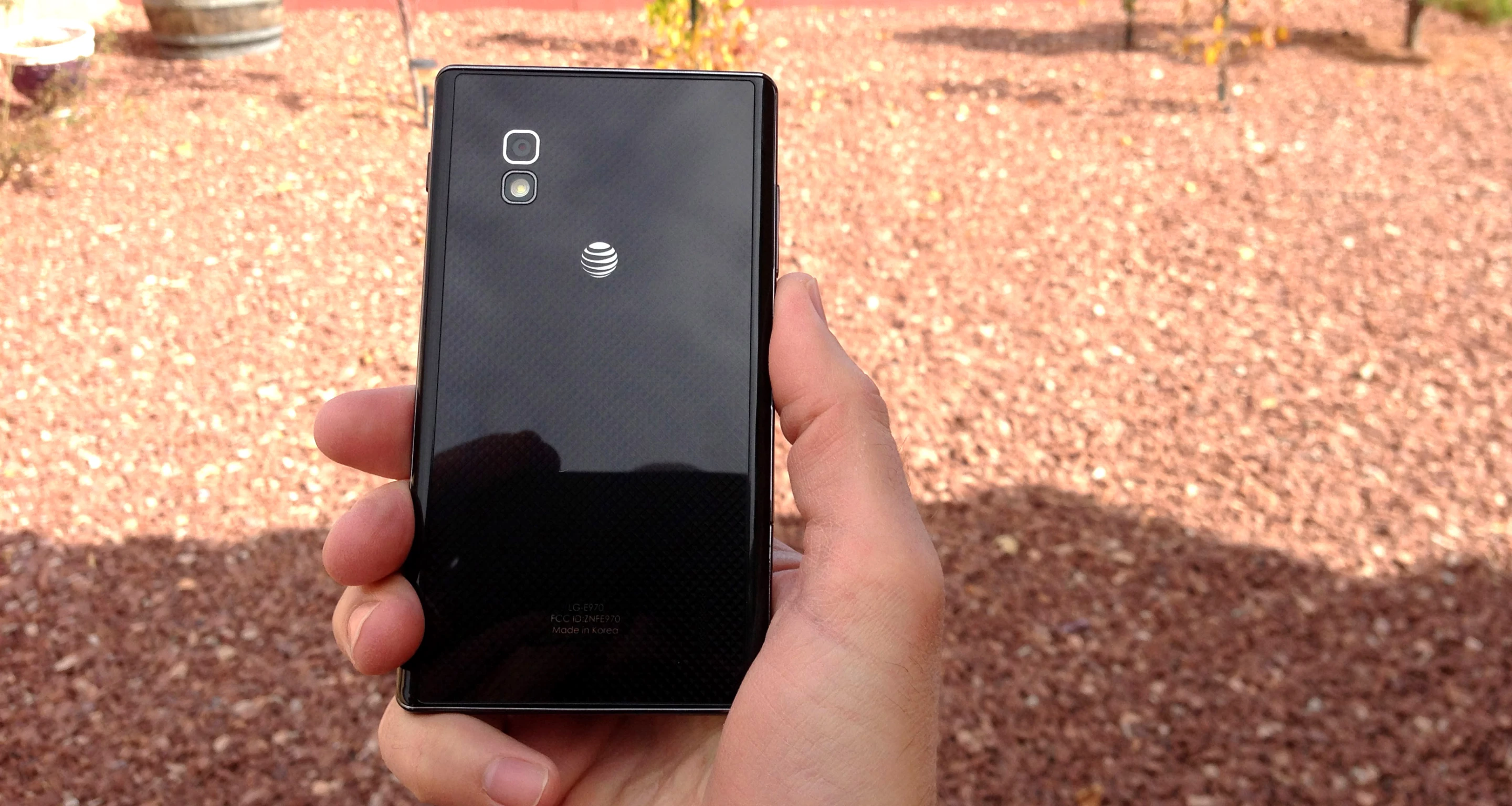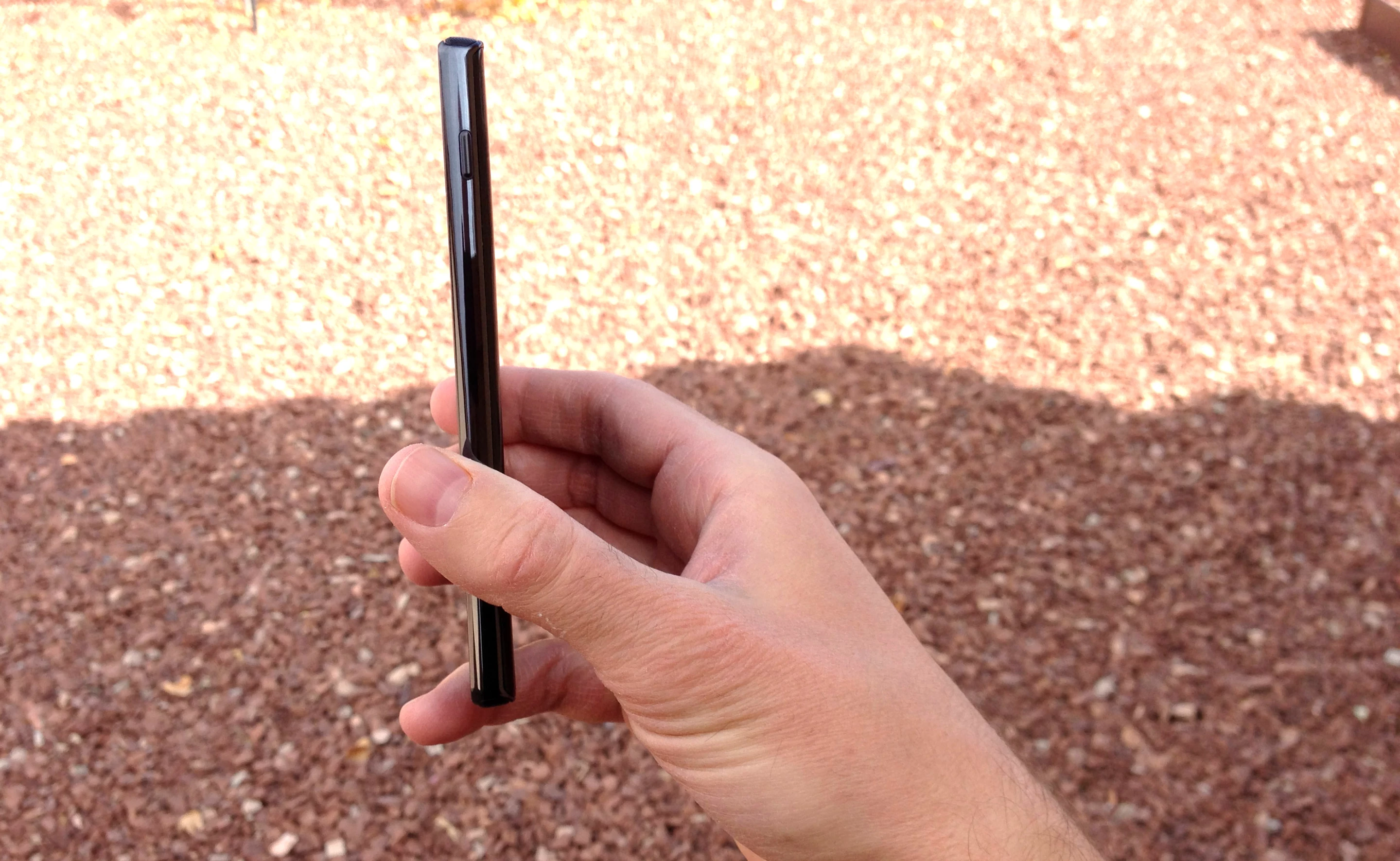LG has struggled with smartphones. It was early to the dual core party with the Optimus 2X, and added a third dimension with the Optimus 3D. None of that caught on. Recently, the company had been toiling in obscurity with low to mid-grade handsets.
Now the Korean company is back – with a vengeance. It pulled no punches this holiday season, releasing a high-end beast of a phone in the Optimus G. Is this the Android phone you've been waiting for? Or is LG destined to sit next to HTC and Motorola, watching Samsung reap all the profits? Read on.
Design

If you like huge phones, then you'll love the Optimus G. It rides the recent wave of super-sized Android phones, and is among the best.
Its build feels high-quality. Many Android handsets have cutting-edge internal hardware, but their outer casings are made of cheap plastic. Not the Optimus G. Its backside is made of glass. It feels solid in the hand, like a healthy portion of its budget went into materials.
It doesn't, however, feel like it was designed for human hands. If it was, those hands belonged to Shaquille O'Neal. I find it unwieldy. It's too big to hold comfortably with one hand, and too small to hold comfortably with two. It's like gripping a slab of bathroom tile.
Part of this comes from its weight. Though its dimensions are smaller than the Galaxy S III's, the Optimus G is over 14 g heavier. That's the flip side of that glass back.
Your mileage may vary, and it all comes down to your ideal phone size. For you, it may be perfect. But if you've never owned a huge smartphone, you'd be wise to play with the Optimus G in a store before buying.
Display

The display is terrific. It's as sharp and gorgeous as they get. Even if the phone doesn't feel natural in hand, you may be so mesmerized by the screen that you don't care.
On a technical level, it's a 4.7-inch, 768 x 1280 display. If it were made by Apple, its 318 pixels per inch would be called "Retina." Text is crisp, colors are great, and everything looks close to the glass surface. Chances are, you'll love it.
That extra screen real estate is why LG (and other manufacturers) have shifted to these super-sized phones. You have a larger frame for everything you do. It almost voids any need for a seven-inch tablet.
Performance

On a hardware level, performance is outstanding. On a software level, it has issues that detract from its cutting-edge processor.
The Optimus G sports the Snapdragon S4 Pro APQ8064. It's a quad core chip that screams at 1.5GHz. It can handle anything you throw at it, and has the benchmarks to prove it (1670 in Geekbench).
The performance problems are the same that you'll find in every pre-Jellybean Android phone: the user interface is laggy. Pinching, zooming, and scrolling are all choppy and lacking fluidity. This phone proves that no amount of processing can make up for laggy software.
The Optimus G begs for Project Butter, one of the marquee additions in Android 4.1, Jellybean. This phone is stuck on Ice Cream Sandwich (4.0.4), but LG says that it will be updated in the coming months.
When that happens – and the UI fluidity matches the hardware – performance will be as good as it gets.
Cameras

There are two versions of the Optimus G. One has an 8-megapixel camera (AT&T in the US), and the other has a 13-megapixel camera (Sprint in the US). We tested the first one.
Pictures look outstanding: detailed, and vibrant. It also handled low-lit shots better than many high-end smartphones.
Wireless
The Optimus G has both LTE and HSPA+ radios. I'm unable to test AT&T's LTE, but you can expect terrific data speeds that might trump your home Wi-Fi.
In my tests, HSPA+ speeds were just like they are on other phones. That means "3G+" downloads of around 8Mbps. In some markets, you may see faster HSPA+ 42 that approaches LTE speeds.
It would be smart to ask your carrier about your local LTE and HSPA+ availability before throwing down for the Optimus G.
The Elephant in the Room

The Optimus G has a fraternal twin: the Nexus 4. LG teamed up with Google to design the latest Android flagship, and the two phones are nearly identical. The terrific display, blazing-fast processor, and RAM are all equal. Build and design are similar too. The Nexus 4 just lacks a microSD slot, and has no LTE.
The Nexus 4 also comes with no strings attached. The Optimus G costs US$200 on-contract. For only $100 more, you can buy the 8 GB Nexus 4 off-contract.
Software, however, is the biggest reason to opt for the Nexus 4. It runs unmodified Android 4.2, Jellybean. The Optimus G's lag, custom skin (LG's UI 3.0), and carrier crapware aren't issues on the Nexus 4.
The lag should be remedied by the Optimus G's Jellybean update, but I don't recommend buying any device based on a "future update." You set yourself up for a bait-and-switch.
Summing up

If you want a big-honking powerhouse of a phone, look at the Optimus G. But you'd also be wise to look even closer at the Nexus 4. If you can live without LTE, the Google flagship is equal or superior in every other way.
With the Optimus G, LG announces that it's back in the game. This is a beast of a phone with some of the best specs on the market.
For some it will be too big, with software that's too laggy. But if you like super-sized phones, insist on LTE, and can wait for the smoothing Jellybean update, the Optimus G may be the best Android phone you can buy.














